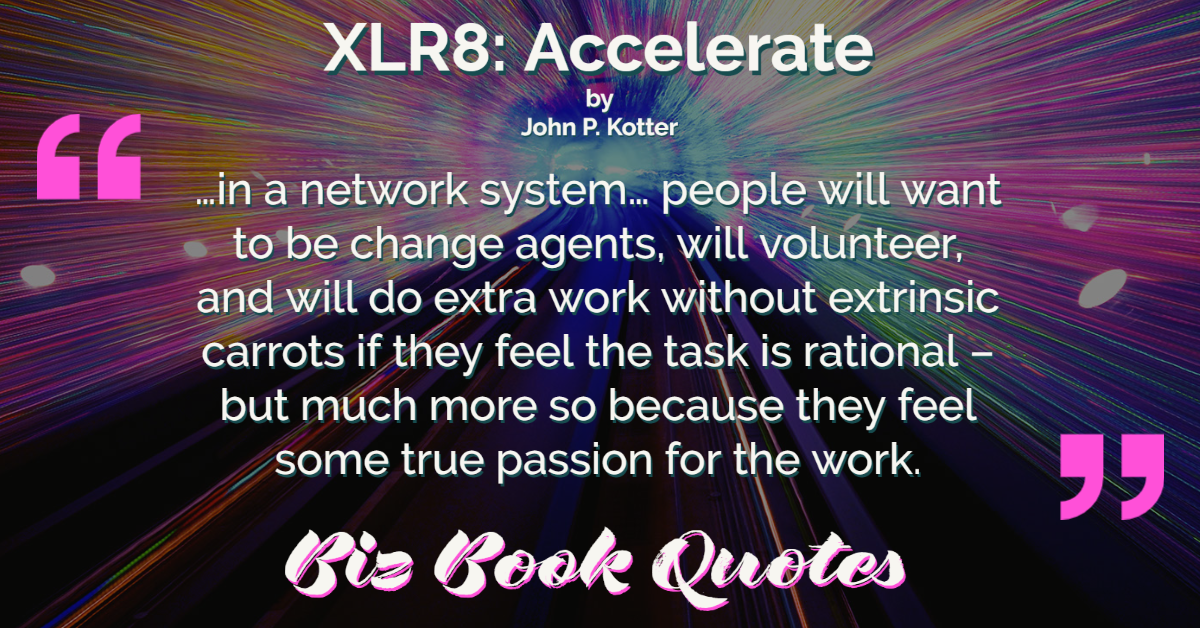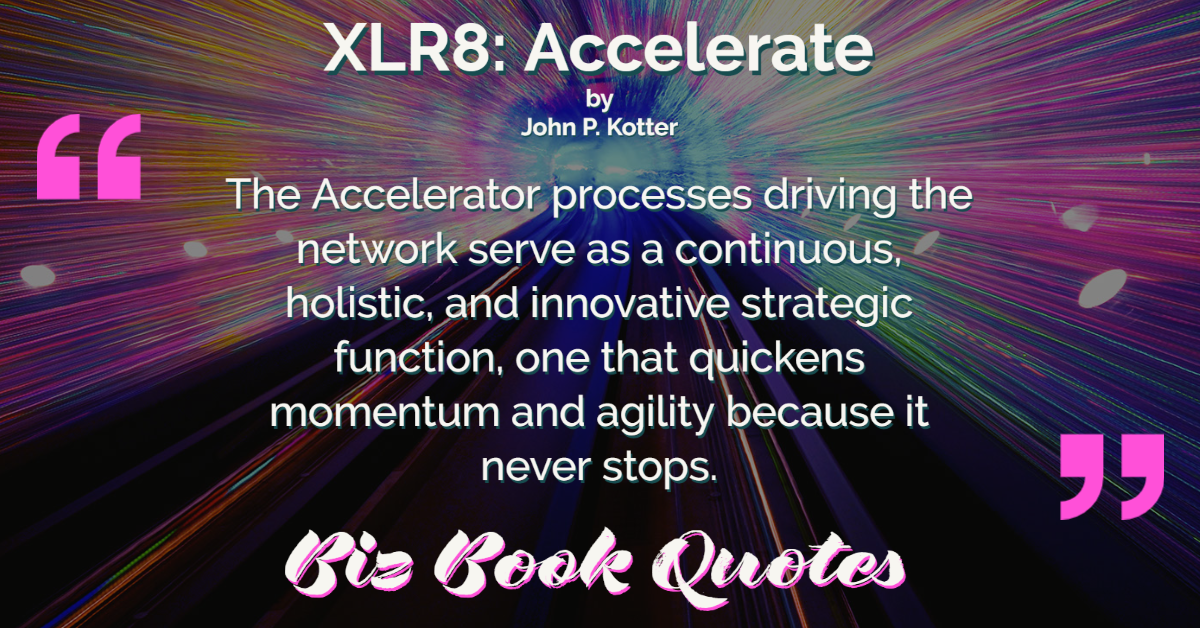 |
Even in mature organizations, informal networks of change agents frequently operate under the hierarchical radar to making something new happen faster.
|
13 |
 |
Although a typical hierarchy tends not to change much from year to year, this type of network typically morphs all the time with ease.
|
20 |
 |
In a truly reliable, efficient, agile, and fast enterprise, the network meshes with the more traditional structure…
|
21 |
 |
…actions by senior executives clearly signal that the network is not in any way a rogue operation… it is part of a system designed for competing and winning.
|
22 |
 |
As they mature, organizations evolve naturally toward a single system – a hierarchical organization – at the expense of the entrepreneurial network.
|
22 |
 |
…it is essential that the core of the network (the guiding coalition) and the executive committee learn to develop and maintain the right relationship.
|
38 |
 |
…hierarchy… begins to quietly yet systematically kill off the network side of an organization.
|
68 |
 |
…in a network system… people will want to be change agents, will volunteer, and will do extra work without extrinsic carrots if they feel the task is rational – but much more so because they feel some true passion for the work.
|
80 |
 |
The Accelerator processes driving the network serve as a continuous, holistic, and innovative strategic function, one that quickens momentum and agility because it never stops.
|
178 |
 |
…the starting point for any discussion of motivation in the workplace is a simple fact of life: People have to earn a living.
|
35 |